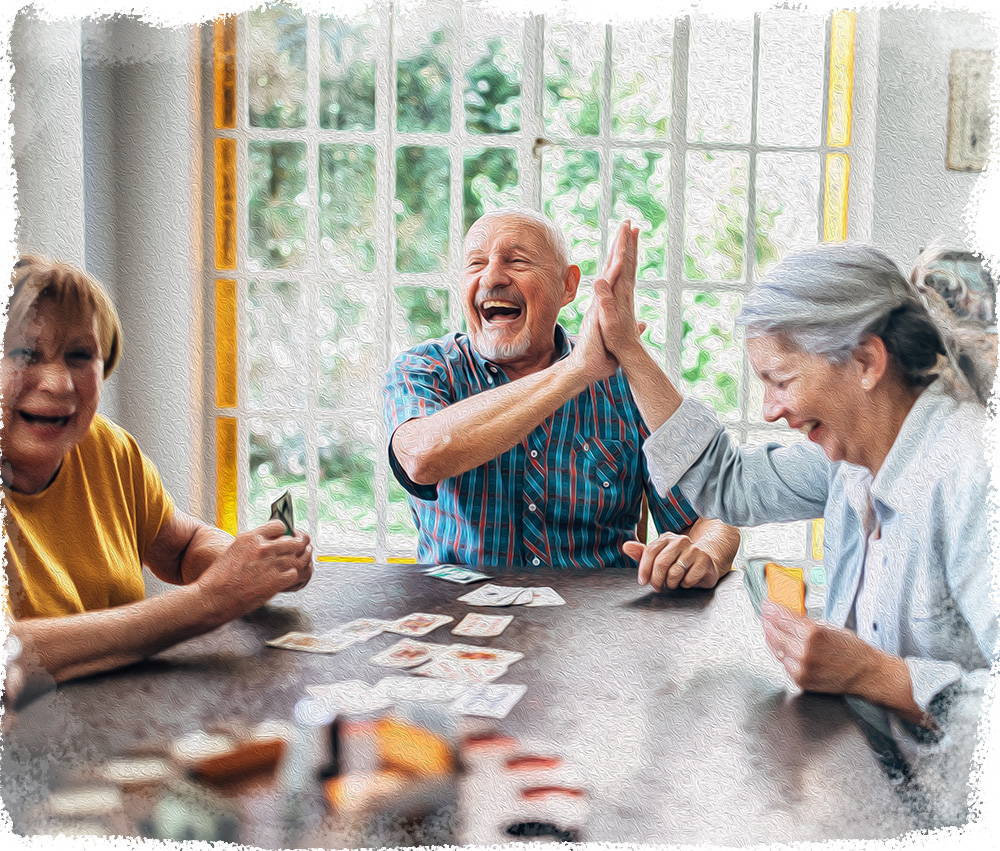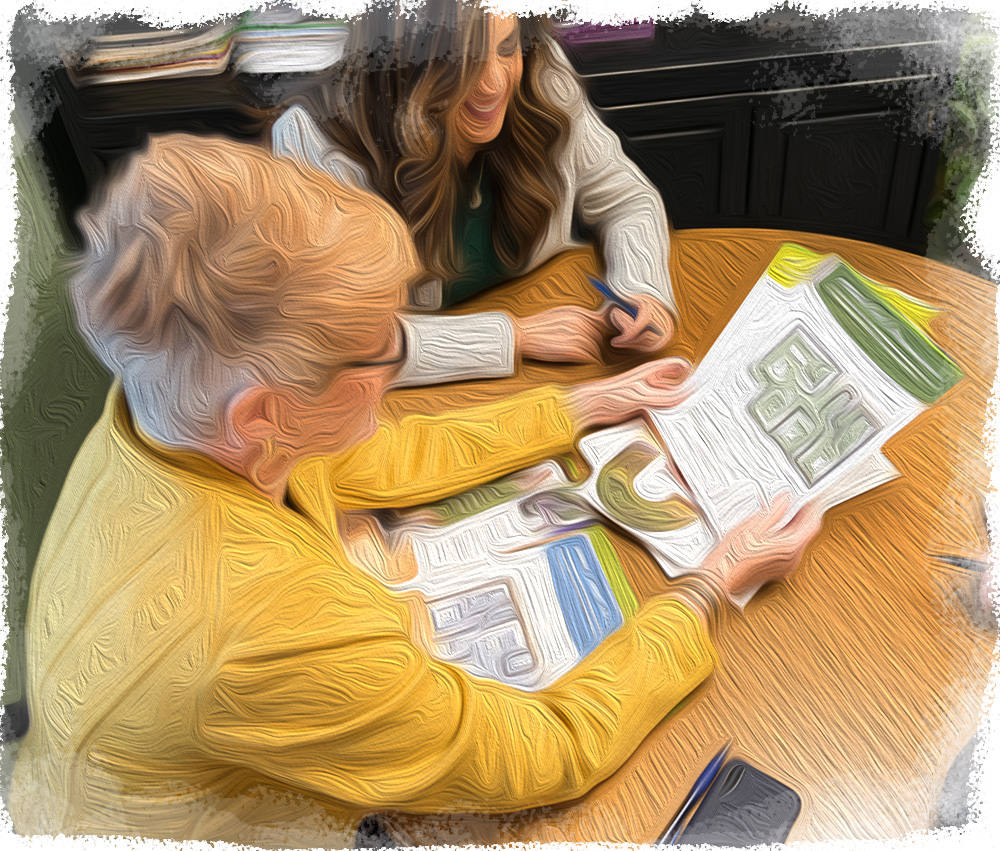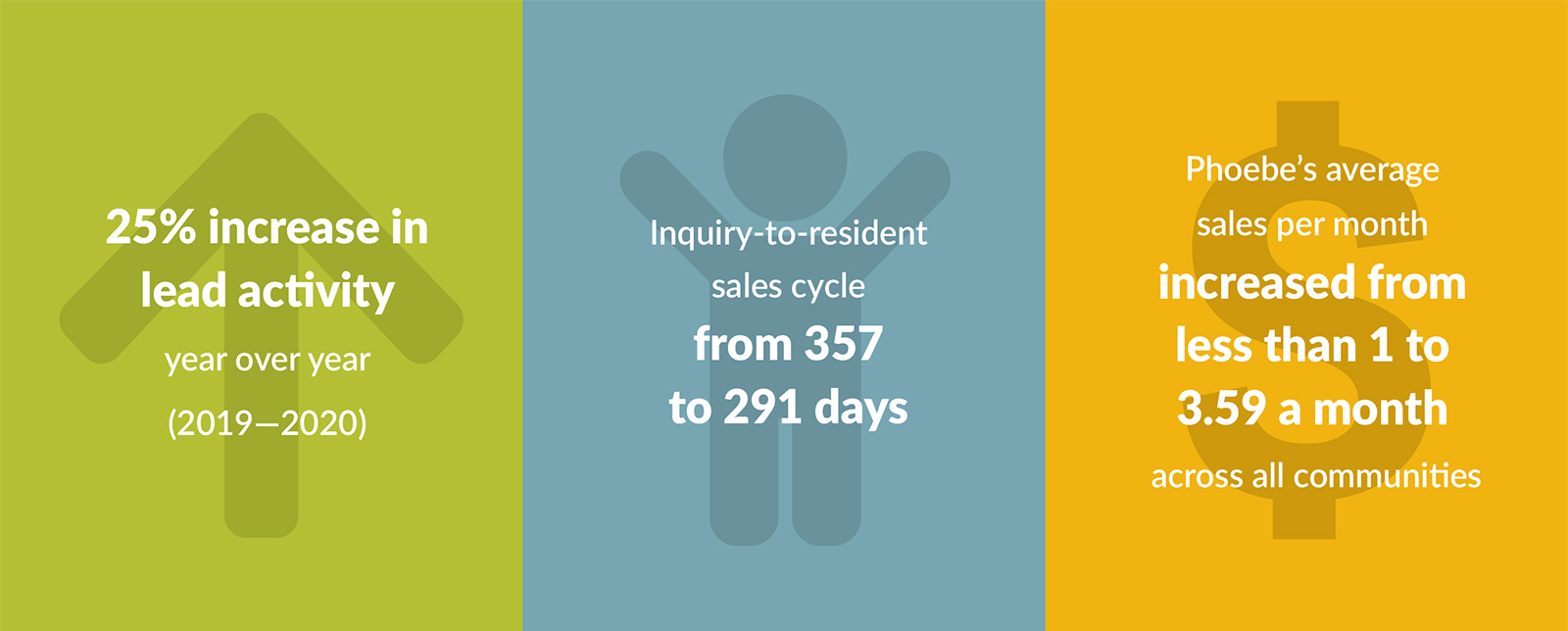Senior living is a unique product in that the solution offers consumers much more than a place to live: The lifestyle offered by your community is where its true value lies. The sales process needs to both educate prospects about the value of senior living and entice them on the unique benefits your community offers. Discover how to effectively sell senior living by leveraging data-driven insights, understanding your target audience and adapting your sales approach.
1. Use data to inform decision-making
Harness the power of data to evaluate your senior living community’s performance and identify areas for improvement. Using your CRM, pull reports on historical performance, such as how many new leads are entered annually, the typical conversion rates from inquiry to tour, lead to sale conversion rates, number of touches per sale and historical sales pace by month.
Using this information, you can begin to uncover where to focus your efforts and set achievable goals for how to reach your overall occupancy goals (or understand if your current goals are realistic). Take a look at some common benchmarks to get an idea of how to measure your sales effectiveness and performance.

2. Know your target audience
To sell senior living successfully, it’s essential to understand the needs, preferences and expectations of your target audience. Being able to compare your community against your competitors is important, but those features must be valued by the prospect to move the occupancy needle.
Use your initial conversations (whether by phone or email) to start the discovery process: Why is your prospect reaching out? What prompted them to reach out now? Is your prospect single or part of a couple? Do they have pets? What attracts them to senior living? What do they enjoy in their lives today? What are they worried about giving up? As you get to know your prospects, connect with them on any interests or history you both share — maybe you’re from the same town or both love kayaking. Building rapport will help you to establish a true connection with your prospect, and understanding their unique wants and needs will help you tailor the offering to what might appeal to them most. Establish trust by being transparent, responsive and empathetic to their needs and concerns. Offer personalized tours, informative resources and opportunities to meet current residents, fostering connections that lead to sales.

3. Understand market trends and competitor offerings
In order to sell senior living, it’s important to get to know your market intimately. What qualities are unique about the areas you serve? Have there been changes recently that impact prospects’ living situation, costs or quality of life, such as an increase in property taxes or hard-hitting weather? You can help prospects understand how your solution alleviates those concerns.
Additionally, who are your top competitors? Get to know what they offer, how they market themselves online and their price points so that you can effectively differentiate your community from the rest.
4. Emphasize the value of senior living
Your community offers much more than a cottage or apartment — it’s not a real estate sale. Focus on painting the picture of how your prospect’s lifestyle will look after moving to your community. If they’re concerned about isolation or feelings or loneliness, highlight the community’s amenities and programming that help foster social connection. If future care needs are a chief concern, discuss your community’s levels of care and how they work. Stress the importance of safety, security and peace of mind provided by your community’s dedicated staff and cutting-edge systems.


5. Train and empower your sales team
Equip your sales team with the knowledge and tools they need to excel in selling senior living. Invest in training programs that focus on communication, relationship-building and sales techniques tailored to the senior living industry. Creating Results offers sales services to analyze senior living sales teams and provide insights into what’s working as well as areas for optimization. We provide recommendations for how your community can attract and retain more prospects while shortening the sales cycle.
Results from sales training with Creating Results (see full case study):

6. Measure success and continuously improve
Regularly evaluate the effectiveness of your sales and marketing strategies to identify areas for improvement. Using the data you uncovered in step 1, establish key performance indicators (KPIs) to measure success and refine your approach based on the results. Embrace a culture of continuous improvement to optimize your sales process and achieve your senior living community’s business goals.



